Royal Norfolk Regimental Museum's collection
The Royal Norfolk Regimental Museum's collection explores the rich and varied history of the county regiment from 1685 to 1959. It documents the Regiment's travels around the world over three centuries and the experiences of those who served within its ranks: young men, at the most impressionable time of their lives going through the most extraordinary experiences.
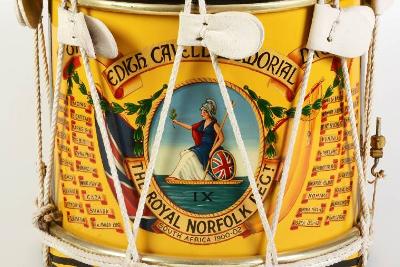
A selection of campaign medals and gallantry awards from the Museum's extensive collection are on display with additional material regarding the recipient, specific action or campaign. This includes a Victoria Cross from the Second World War and an Army Gold Medal from the Peninsular War. Additional medals, archives or items in the collection not on display, can be viewed by appointment.
The small but fine archive is largely from the 19th and 20th centuries, but there are items dating back to the formation of the Regiment in 1685. It is a unit archive, we don't hold personal army service records of individuals, but it has been extensively indexed by name and is regularly used for family history enquiries as well as broader historical research.
In addition, a large number of the handwritten items have been transcribed for ease of access to the information they contain. The Museum collection is particularly rich in material from the First World War; letters and diaries illuminate the experiences and human cost of the four years of world conflict.
The Royal Norfolk Regimental Museum collection is owned and overseen by Trustees and is managed by Norfolk Museums Service.
The Royal Norfolk Regimental Museum displays are divided into two main sections: the 20th century; covering two World Wars plus the National Service years, including the Korean War and the Cyprus EOKA campaign. Regular, volunteer and conscripted soldiers in the Norfolk Regiment served in the Western Front, Italy, Mesopotamia, Gallipoli, and the Middle East, 1914-18. Between 1939 and 1945 they were in Europe, the Far East, India and Burma. On the entry of Japan into the War, three Royal Norfolk territorial battalions, part of the 18th Infantry Division, along with men from Cambridgeshire, Suffolk and Essex Regiments, were sent to Singapore. They became Far East Prisoners of War, many working on the infamous Burma railway. The Museum has a collection of FEPOW material, including nominal rolls, clothing, FEPOW made and adapted items and photographs.
From the West Indies to America, and Japan to India, the movement and stations of the Regiment reflected British imperial concerns throughout the 18th and 19th centuries. The collection includes material that reflects this activity. There is a large photographic collection and a range of objects bought, collected as souvenirs, and even looted whilst on active service.
Timeline
1685
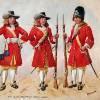
Drawing of the 9th Regiment of Foot, 1685, showing the uniform of the Foot officers, pikemen, musketeers and grenadiers - now the Royal Norfolk Regiment.
1846
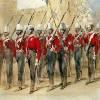
A Detachment of the 9th Foot enter Allahabad after the First Sikh War 1846. The Sikh wars led to the annexation of the Punjab by the British East India Company and thence it became part of the British Empire. Watercolour by Henry Martens, 1849.
1903
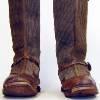
A pair of knee-high boots with leather soles and lined uppers as issued to members of the Tibet expedition of 1903 in the Army. These were worn by 4038 Cpl. P.W. Green 1st Battalion, Norfolk Regiment, Machine Gun Detachment whilst in Tibet. These thick-soled, leather and wool boots were definitely needed in the intense cold of the Himalayas with temperatures as low as 20 degrees of frost at night.
1916
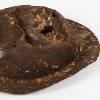
Rusted steel British Army Brodie helmet with bullet holes. This helmet was found between Carnoy and Montauban, exactly at the point on the old German front line that was attacked and captured by the 8th Battalion, Norfolk Regiment on the first day of the Battle of the Somme, 1st July 1916.
1944-45
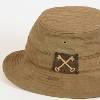
This jungle hat was worn by Brigadier Robert Patrick Scott of the 2nd Battalion, Royal Norfolk Regiment during the Burma Campaign of 1944-1945. It is made from khaki cotton, and the emblem of crossed keys above the brim is the badge of the 2nd Infantry Division, to which the 2nd Battalion belonged.











